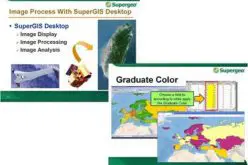South Dakota State University Ranks 27th in World for Remote Sensing Research

AUGUST 21, 2017 – South Dakota State University was ranked 27th worldwide and 7th in the United States for research productivity in the area of remote sensing, according to ShanghaiRanking’s 2017 Global Ranking of Academic Subjects. The ranking is based on the articles published in remote sensing journals between 2011 to 2015.
Geoffrey Henebry, co-director of the Geospatial Sciences Center of Excellence (GSCE) at SDSU, said, “We are living up to our name. It is, indeed, a center of excellence and we have been recognized as doing internationally competitive research here in South Dakota.”

Geoffrey Henebry
ShanghaiRanking uses four metrics to determine research productivity—number of publications authored, percentage of articles with international collaborators, number of publications in top journals and average impact (measured by citations) of the papers published according to a well-established independent database. “All measures are objective,” according to ShankhaiRanking CEO Ying Chang.
SDSU ranked just below the University of California-Berkley and above larger land-grant institutions, such as University of

Thomas Loveland
Wisconsin-Madison, The Ohio State University and University of Nebraska-Lincoln, in the remote sensing subject area. “I think this speaks very well for what we are doing,” Henebry said.
“We are a very small group relative to those in competing universities,” he pointed out, noting that the size is not figured into the ranking system. “This is testament to the fact that we are punching above our weight class.”
Henebry also recognized the contributions from Associate Dean of Engineering Research Dennis Helder’s satellite calibration group at the SDSU Image Processing Laboratory, because its publications were also factored into the ranking metrics. “This is a remarkable achievement that indicates the depth and breadth of expertise SDSU has established in satellite imaging calibration and applications,” Helder said.
In addition, Henebry acknowledged the importance of the U.S. Geological Survey Center for Earth Resources Observation and Science, commonly known as EROS, to GSCE. “The reason we are here is EROS,” he pointed out. The GSCE was established in 2005 as a research and educational collaboration between SDSU and USGS/EROS.
GSCE Co-Director Thomas Loveland, a senior scientist at EROS, said, “This is terrific recognition for the entire team.”
SDSU Vice President for Research and Economic Development Daniel Scholl said, “We are very proud of the accomplishments of the remote sensing researchers at SDSU. Their world class research brings the value of our relationships with the EROS laboratory to SDSU, to our students and to our stakeholders.”









